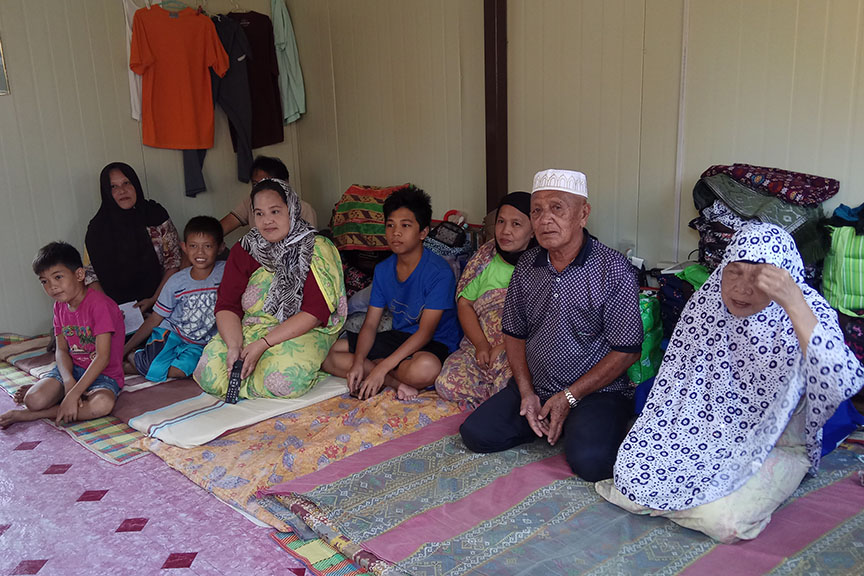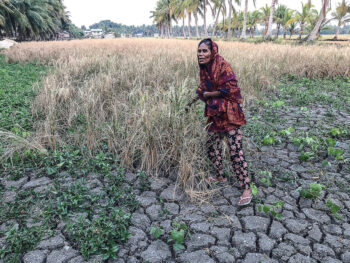MARAWI CITY (MindaNews / 16 Oct) – Crammed inside a 24-square-meter house is how the 16 members of the family of Norhayne Dimapinggun have lived ever since their family compound was destroyed at the height of the Marawi siege two years ago.
 A big family crowds a small temporary shelter in Barangay Sagonsongan in Marawi City. MindaNews file photo by BOBBY TIMONERA
A big family crowds a small temporary shelter in Barangay Sagonsongan in Marawi City. MindaNews file photo by BOBBY TIMONERA
Dimapinggun had to construct a small extension at the back of the house at the temporary shelters of Barangay Sagonsongan to accommodate their other family members.
“We used to be a bigger family before the war gutted our compound. We are what is now left of our family,” she said.
Dimapinggun, a 32-year-old mother of four, said many of their family members are now scattered all over—in the nearby cities of Iligan and Cagayan de Oro, and as far away as Manila.
She said their family was forced to migrate to seek opportunities elsewhere.
“Are we more liberated today than two years ago” I say no, we are not,” Dimapinggun said.
“We missed the support we enjoyed when our family were together,” she said.
Two years ago, thousands of residents were forced to leave their homes after the military and Daesh-inspired militants fought a five-month bloody war.
The residents are living in temporary shelters outside Marawi after their houses were reduced to rubble.
Many have fled to other cities to start new lives.
Elin Anisha Guro, head of the Mindanao State University library, said one of the major casualties of the Marawi siege is their time-honored close family ties.
She said compounds or big houses—designed to accommodate a big family, even entire clans—were among the houses destroyed by the fighting.
“Sometimes a big house have big rooms that is divided into smaller rooms where the family members also stay,” Guro said.
Norhaisah Radja-alam, 36, who used to run a sari-sari store to feed her seven children, said she missed talking to relatives in the family compound.
Radji-Alam, who now has a small eatery in Sagonsongan, said she also depended on her relatives to watch her children every time she goes out to buy goods for her store.
“I now feel the hardship taking care of my children alone without the help of my relatives,” she said.
Fr. Teresito Soganub, who was hostaged for five months by the ISIS gunmen who took over Marawi, said family clans are all-too important in a Maranao life.
Soganub, who spent 23 years as a priest of the Prelature of St. Mary in Marawi City, said Maranaos involved their relatives in every aspect of their celebration.
“They have big pots where everyone helps in the cooking. The family clan is in their culture,” the priest said.
Soganub said the war destroyed that important aspect of Maranao life. (Froilan Gallardo / MindaNews)
